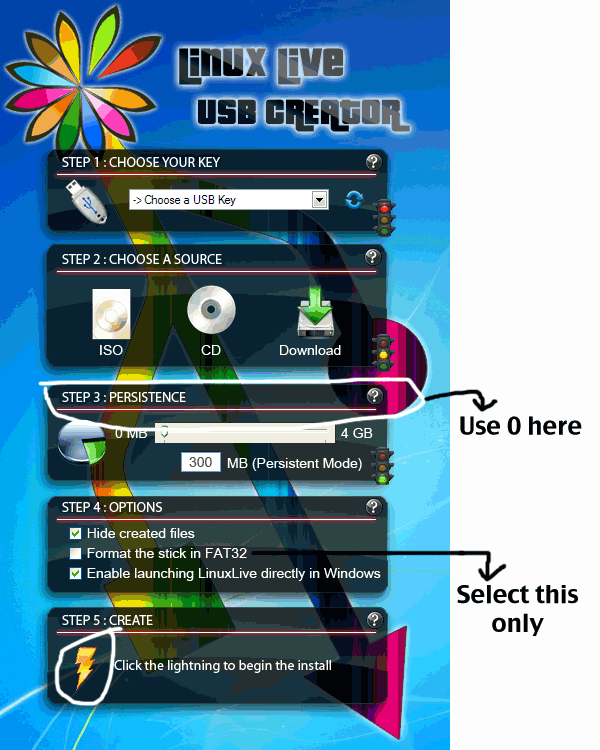
- #INSTALL UBUNTU FROM USB ON NEW COMPUTER INSTALL#
- #INSTALL UBUNTU FROM USB ON NEW COMPUTER ISO#
- #INSTALL UBUNTU FROM USB ON NEW COMPUTER DOWNLOAD#
- #INSTALL UBUNTU FROM USB ON NEW COMPUTER MAC#
- #INSTALL UBUNTU FROM USB ON NEW COMPUTER WINDOWS#
After that, if you really like Linux and want to ensure maximum performance, you can move to a dual-boot configuration. It’s generally best to start out by booting Ubuntu from a USB or CD drive or installing it on your computer with Wubi.

#INSTALL UBUNTU FROM USB ON NEW COMPUTER WINDOWS#
Unless you’re completely sure you never want to use Windows again, you’re better off dual-booting Ubuntu and leaving at least a small Windows partition lying around. An Ubuntu system in a dual-boot configuration is just as fast as an Ubuntu that’s replaced Windows entirely. There’s no real advantage to replacing Windows with Ubuntu instead of dual-booting, except that you can reclaim the hard disk space used by Windows. This option isn’t for most users: It’s generally a much better idea to dual-boot Ubuntu, just in case you need that Windows partition for something else in the future.
#INSTALL UBUNTU FROM USB ON NEW COMPUTER INSTALL#
To do this, install Ubuntu normally but select the Replace Windows with Ubuntu option. If you’re ready to leave Windows behind, you can go all the way and replace your installed Windows system with Ubuntu (or any other Linux distribution). However, this does make Ubuntu a bit more difficult to remove – you can’t just uninstall it from the Windows Control Panel if you don’t want to use it anymore. Unlike with the Wubi method, there’s no disk performance penalty because you’re installing Ubuntu on its own partition. You’ll be able to select the operating system you want to use when you start your computer. Go through the install process and select the option to install Ubuntu alongside Windows. Once you have, restart your computer and select the Install Ubuntu option instead of the Try Ubuntu option. Just place the Ubuntu installer on a USB drive, CD, or DVD using the same method as above. If you want to use Linux, but still want to leave Windows installed on your computer, you can install Ubuntu in a dual-boot configuration. Go through the installation process in the virtual machine as if you were installing Ubuntu on a real computer.
#INSTALL UBUNTU FROM USB ON NEW COMPUTER ISO#
Create a new virtual machine, select the Ubuntu operating system, and provide the ISO file you downloaded from Ubuntu’s website when prompted.
#INSTALL UBUNTU FROM USB ON NEW COMPUTER DOWNLOAD#
To create a Ubuntu virtual machine, download and install VirtualBox. The Ubuntu desktop’s 3D effects, in particular, won’t perform very well in a virtual machine, while they should perform smoothly on most computers. You’ll be able to try Linux without even restarting your computer, although virtual machines are slower than running the operating system on your computer itself.
#INSTALL UBUNTU FROM USB ON NEW COMPUTER MAC#
The virtual machine runs Ubuntu in a window on your existing Windows or Mac desktop. Like other operating systems, Ubuntu can be run in a virtual machine on your computer. If you want to use Ubuntu on a long-term basis with maximum performance, you should install it on your computer in a dual-boot configuration (see below). This will result in a performance penalty when writing to or reading from the hard disk, however. Best of all, if you decide you don’t like Ubuntu, you can uninstall it from the Windows control panel. When you boot into Ubuntu, Ubuntu will run as if it were installed normally on your hard drive, although it will actually be using a file on your Windows partition as its disk. When you reboot your computer, you’ll have the option to boot into Ubuntu or Windows. Wubi runs like any other application installer and installs Ubuntu to a file on your Windows partition. You can install Ubuntu on Windows with Wubi, the Windows installer for Ubuntu Desktop. If you just want to try Ubuntu, there’s a better way. If you decide you don’t want Linux later, you’ll have to delete the new partitions, resize your old partitions to reclaim the space, and repair your Windows bootloader. It involves resizing existing partitions to make space for the new Linux operating system. Traditionally, installing Linux on a hard drive has been daunting for new users. Restart your computer from the removable media you provided and select the Try Ubuntu option. (On Windows 7, you can right-click an ISO file and select Burn disc image to burn the ISO file without installing any other software.) Use Rufus to put Ubuntu on your USB flash drive or burn the downloaded ISO image to a disc. To create a Ubuntu USB drive or CD, download the latest Ubuntu disc image from Ubuntu’s website.

The computer will boot from the removable media you provided and you’ll be able to use Ubuntu without making any changes to the computer’s hard drive.

After you place Ubuntu on the drive, you can insert your USB stick, CD, or DVD into any computer you come across and restart the computer. One of the easiest ways to get started with Ubuntu is by creating a live USB or CD drive.


 0 kommentar(er)
0 kommentar(er)
